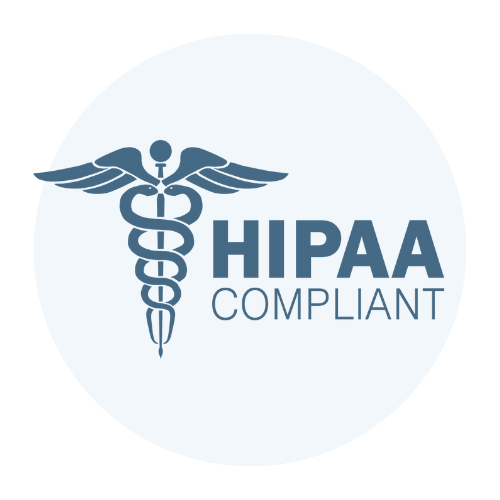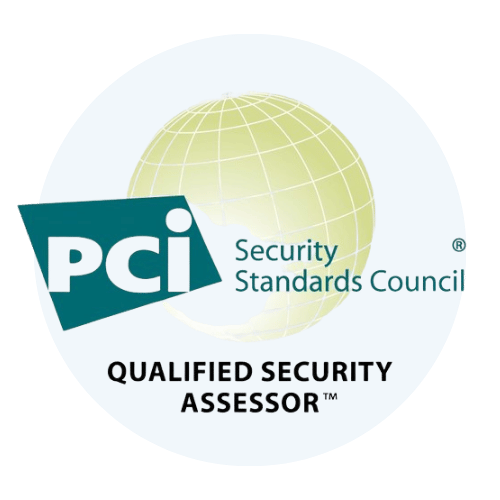WATCH: ‘The Dark Side of SOC 2: Third-Party Risks Hidden in Plain Sight’ RSA Conference 2025

At the RSA Conference 2025, TrustNet’s CISO, Trevor Horwitz, and CTO, Mike Kerem, delivered a critical presentation: “The Dark Side of SOC 2: Third-Party Risks Hidden in Plain Sight.” The session challenged common misconceptions about SOC 2 reports, emphasizing that compliance alone does not guarantee security. Watch the full session and learn how to strengthen your vendor risk strategy today. Session Highlights: The Dark Side of SOC 2 TrustNet’s RSAC 2025 presentation broke down the most common but least understood weaknesses hidden in SOC 2 reports. Here are the key takeaways: SOC 2: What It Covers SOC 2 evaluates controls across five criteria: security, availability, processing integrity, confidentiality, and privacy. It applies to service providers handling sensitive or mission-critical data, including SaaS, cloud, and B2B platforms. Reports are issued by CPA firms under the AICPA Trust Services Criteria and come in two forms: Type I – point-in-time assessment Type II – control performance over 3–12 months Each report includes an audit opinion, system description, and test results. SOC 2 is commonly used for vendor due diligence, compliance checks, and proving security posture. Hidden Risks to Watch As the above recommendations suggest, your organization should always seek to encrypt all information whenever possible as the gold standard of cybersecurity. 1. Misaligned Scope and Controls SOC 2 only covers systems that the vendor defines in the scope. Some reports audit a single product line while excluding core infrastructure. What to do: Read the system description closely. Request details for anything out of scope. 2. Subservice Providers Are Often Ignored Vendors may rely on cloud or third-party providers that aren’t audited or secured. Common risks: misconfigured S3 buckets, no logging, overreliance on default settings. What to do: Identify subservice providers. Confirm they’re monitored or audited. 3. Missing Domains Create Control Gaps Vendors can exclude availability, confidentiality, or privacy if they’re not part of the selected TSCs, as only security is mandatory. That leaves blind spots around data handling, uptime, or regulatory compliance. What to do: Map SOC 2 domains to your risk areas. Ask for alternate assurances where gaps exist. 4. SOC 2 Doesn’t Equal Continuous Security SOC 2 is a snapshot. It doesn’t reflect post-audit breaches, new infrastructure, or personnel changes. What to do: Supplement audits with continuous monitoring and require incident disclosures in contracts. 5. Audit Quality Varies by Vendor SOC 2 doesn’t mandate control depth. Some vendors test thoroughly; others check boxes. What to do: Review audit scope, control rigor, and the auditor’s credibility. 6. “Clean” Reports Can Be Misleading Zero-exception reports may mean limited scope or weak auditing, not strong security. What to do: Ask how issues are identified and resolved. Transparency builds trust. 7. Shared Controls Are Often Overlooked SOC 2 includes Complementary User Entity Controls (CUECs) that define the customer’s, not just the vendor’s, responsibility. Overlooking these shared duties can lead to misconfigurations, weak access controls, missing backups, or open exposure. What to do: Map CUECs to your internal controls. Follow the vendor’s configuration and monitoring guidance, audit regularly, and train teams to manage responsibilities. Watch the full session below:
Cybersecurity Awareness: Training to Prevent Human Error

TL;DR Human error caused 95% of breaches in 2024. Cybersecurity awareness training teaches employees to recognize threats, reduce risky behaviors, and respond quickly. This guide covers what awareness means, how to implement it, and why TrustNet’s training platform is the all-in-one solution to build a security-first workforce. Human error contributed to 95% of data breaches in 2024, driven by insider threats, credential misuse, and user-driven errors, according to a new study by Mimecast. This statistic only means that without proper training, people become the weakest link. But with the right guidance, they can be your strongest defense line. Cybersecurity awareness is the foundation of a strong digital defense. It refers to educating individuals, especially employees, on recognizing threats, understanding risks, and taking informed actions to prevent breaches. In this article, you’ll learn: What cybersecurity awareness is and why it matters The core components of effective employee security training Practical steps for building a proactive, security-conscious culture Let’s dive into how cybersecurity training can turn awareness into action and risk into resilience. What is Cybersecurity Awareness? Cybersecurity awareness means understanding the risks, threats, and safe practices that help individuals protect digital systems and data. It’s more than knowing that cyberattacks exist; it’s about recognizing how and why they happen and what actions prevent them. Organizations use employee security training and cyber risk education to help teams develop this understanding. Cybersecurity awareness empowers people to make smarter decisions in real time, whether they’re opening emails, using corporate networks, or handling sensitive customer information. At its core, cybersecurity awareness teaches employees to: Identify common threats, such as phishing, malware, and social engineering tactics Understand their responsibility in safeguarding systems and data Apply security best practices, like using strong passwords and reporting suspicious activity Minimize risky behaviors that attackers often exploit This awareness turns each team member into a human firewall. When people understand the risks and take ownership of their role, organizations drastically lower the chance of breaches caused by everyday mistakes. Ready to Turn Awareness Into Action? TrustNet’s cybersecurity awareness training programs are designed with expert-led modules, real-world simulations, and continuous learning tracks to equip your team with the tools they need to spot threats and stop them. Talk to an Expert Today! Key Components of Cybersecurity Awareness Training Effective cybersecurity awareness training programs focus on practical knowledge and real-world scenarios. The best programs don’t just inform—they change behavior. Below are the core cybersecurity training components every organization should implement: 1. Phishing Simulations Phishing remains one of the most common entry points for cyberattacks. Simulated phishing exercises train employees to: Spot suspicious emails and malicious links Recognize spoofed sender addresses and urgent language Think critically before clicking or sharing information These simulations build real-world instincts that reduce risk. 2. Password Security Weak or reused passwords give attackers easy access. Training should cover: How to create strong, unique passwords The importance of using password managers How and why to enable multi-factor authentication (MFA) Reinforcing these basics helps close critical security gaps. 3. Social Engineering Awareness Attackers often manipulate people, not just systems. Employees must learn to: Identify emotional triggers and persuasion tactics Verify identities before sharing sensitive information Stay alert to pretexting and impersonation attempts Understanding the psychology behind attacks improves defense. 4. Incident Reporting Quick reporting limits damage. Training should encourage employees to: Report suspicious activity immediately Know where and how to report incidents Understand that reporting isn’t optional; it’s essential When employees act fast, organizations respond faster. Each of these components strengthens your workforce against evolving threats. When combined, they form the backbone of a proactive security culture. Benefits of Cybersecurity Awareness Training The benefits of cybersecurity awareness go far beyond individual knowledge—they directly strengthen your organization’s ability to detect and prevent threats. Here’s how effective training delivers results: 1. Reduces Human Error Human mistakes cause the majority of cyber incidents. Training helps employees: Avoid risky behaviors like clicking suspicious links or sharing credentials Understand how small actions impact broader security React quickly and correctly when faced with threats Reducing human error directly lowers the chance of breaches. 2. Improves Security Culture Awareness creates accountability. When employees take ownership of security: They stay alert to signs of phishing and social engineering They adopt safe practices as part of their daily work routines Security becomes a shared responsibility, not just IT’s job A strong culture makes security second nature. 3. Helps Prevent Data Breaches Trained teams make fewer costly mistakes. As a result: Sensitive data stays protected Attackers find fewer vulnerabilities to exploit Incident response becomes faster and more effective Prevention always costs less than recovery. 4. Supports Regulatory Compliance Frameworks like GDPR, CCPA, and HIPAA require organizations to protect data through proper training. Cybersecurity awareness programs: Align with legal obligations Reduce the risk of fines and investigations Demonstrate due diligence to auditors and regulators Compliance isn’t just a box to check, it’s a defense strategy. When you invest in training, you empower your team to take action that reduces cyber risks every day. How to Implement Effective Cybersecurity Awareness Programs Here’s how to implement cybersecurity awareness that sticks: 1. Use Engaging Methods Traditional slide decks don’t change behavior. Use interactive training methods like: Gamified learning modules Realistic phishing simulations Scenario-based role-playing Engagement boosts retention and helps employees respond confidently in real-world situations. 2. Conduct Regular Refreshers Cyber threats constantly evolve. Your training should too. Build continuous learning programs that include: Quarterly knowledge refreshers Monthly security bulletins Just-in-time microlearning after incidents Reinforcing knowledge over time keeps it top of mind. 3. Measure Effectiveness Training without metrics misses the mark. Track performance through: Pre-training/post-training assessments Simulated phishing click rates Reporting and response rates Use results to improve and personalize future training. When you combine engaging content, regular updates, and data-driven improvements, your team becomes your strongest security asset. Build a Workforce That Actively Defends Your Business Human error drives the majority of security breaches, but with the right training, teams can recognize threats early and respond with confidence. If you want to prevent human error
TrustNet’s Comprehensive Cybersecurity Solutions: A Deep Dive
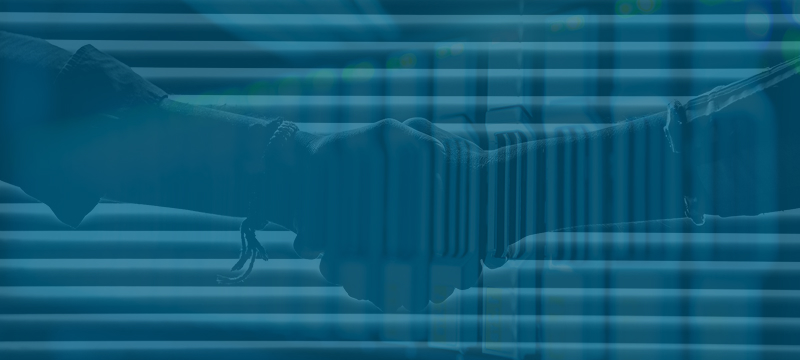
TL;DR TrustNet offers comprehensive, end-to-end cybersecurity solutions designed for modern businesses facing complex threats and compliance challenges. With 24/7 managed security services, cloud protection, risk-based compliance, and expert consulting, TrustNet empowers businesses to defend their digital environments, stay compliant, and scale confidently, all through a single trusted partner and our Accelerator+ approach. Cyber threats are growing more sophisticated, and compliance demands are rising. Modern businesses must defend complex digital environments while meeting strict regulatory requirements. IT and security leaders can’t afford fragmented solutions or slow response times. TrustNet stands out as a trusted managed security service provider (MSSP) and compliance partner. We deliver end-to-end protection through integrated cybersecurity solutions that are purpose-built for modern business needs. From data protection and compliance to threat detection and response, TrustNet helps organizations stay ahead of risk. This article covers: TrustNet’s core enterprise cybersecurity offerings The company’s approach to security and compliance Real business impact for clients across industries Explore how TrustNet helps you safeguard operations, stay compliant, and grow with confidence. TrustNet at a Glance: Experience, Reach, and Approach TrustNet has more than two decades of experience delivering enterprise cybersecurity services across highly regulated industries. We operate globally and support clients across North America, Europe, and Asia. As a managed service provider for cybersecurity and compliance, TrustNet is known for: Technical depth: Teams bring deep expertise in threat detection, incident response, cloud security, and compliance audits. Tailored solutions: Services are purpose-built for mid-sized to large enterprises with complex infrastructure and compliance needs. Client-focused delivery: Every engagement starts with a detailed risk assessment to align solutions with business goals. TrustNet is a trusted partner to organizations in healthcare, financial services, energy, and SaaS, where compliance and uptime are critical. With a reputation for transparency and hands-on execution, TrustNet delivers results that scale with growth. Not sure if your current security strategy is enough? Book a Demo with TrustNet’s cybersecurity experts today. We’ll assess your environment, identify potential gaps, and demonstrate how our managed services can help you stay ahead of evolving threats. Talk to an Expert Managed Security Services: 24/7 Protection and Rapid Response TrustNet delivers always-on protection through a comprehensive suite of cybersecurity services. Designed to defend modern enterprises against complex and fast-evolving threats, these solutions empower organizations to reduce risk, improve visibility, and respond with speed and confidence. Core Capabilities That Drive Resilience TrustNet’s managed service provider cybersecurity offerings include: SIEM and Log Management: Real-time monitoring, aggregation, and analysis of security logs across environments. Threat Management: End-to-end detection, investigation, and response across endpoints, networks, and cloud systems. Vulnerability Management: Proactive identification and remediation of security weaknesses before they are exploited. Incident Response: Rapid containment and recovery from cyber incidents using tested protocols and global threat intelligence. Network Security: Ongoing monitoring and defense of internal and external network traffic to block intrusions and maintain system integrity. These services are powered by GhostWatch, TrustNet’s unified platform for Managed Security and Managed Compliance. It is built to deliver automated, scalable solutions that reduce risks, improve efficiencies, and ensure regulatory adherence. Automated Compliance Management: Enforces and updates policies for GDPR, PCI DSS, and HIPAA; auto-collects audit evidence and runs continuous compliance checks. Real-Time Threat Detection: AI-powered analytics detect and prioritize threats instantly, offering automated response actions to reduce risk and response time. Risk-Based Remediation: Continuously assesses vulnerabilities, ranks them by impact, and launches auto-remediation to address critical threats first. Unified Compliance Dashboards: Real-time visibility into compliance across frameworks with auto-generated audit reports and performance metrics. Seamless Integration & Scalability: Connects easily with SIEMs, cloud environments, and on-prem infrastructure, ready to grow with your business. How It Starts: Tailored Onboarding and Risk-Based Deployment TrustNet begins every engagement with a comprehensive cybersecurity risk assessment and architecture analysis. This allows our team to map threats, identify vulnerabilities, and deploy defenses that align with the organization’s unique business needs and regulatory obligations. Real Results from Industry Leaders Calendly partnered with TrustNet to secure sensitive customer data across its global CRM platform. TrustNet implemented a NIST Risk Assessment and aligned its infrastructure with HIPAA, SOC 2, and ISO 27001 standards. ExperiencePoint leveraged TrustNet’s expertise to complete a successful SOC 2 Type 1 assessment. TrustNet guided them in evaluating existing protocols and implementing best practices for long-term compliance. Careington, a healthcare provider serving over 30 million customers, turned to TrustNet for PCI DSS compliance, risk assessments, penetration testing, and security awareness training. This partnership enabled Careington to secure its vast digital infrastructure, address vulnerabilities, and train employees to act as a frontline defense. TrustNet’s hands-on approach and advanced capabilities continue to help enterprises stay ahead of attackers while ensuring readiness for regulatory audits and business continuity. Cloud Security Solutions: Safeguarding Data in the Cloud TrustNet delivers advanced cloud security solutions that defend critical assets across public, private, and hybrid environments. Our cloud data security solutions include: Cloud Security Assessments Identify misconfigurations, vulnerabilities, and compliance gaps across AWS, Azure, Google Cloud, and hybrid infrastructures. Cloud Monitoring Continuously track cloud activity with real-time alerting, network intrusion detection, and packet inspection. Secure Configuration & Hardening Lock down assets using industry best practices and align security controls to frameworks like CIS Benchmarks. Compliance Automation Maintain continuous alignment with HIPAA, PCI DSS, GDPR, and other regulatory standards through automated policy checks and evidence collection. Why TrustNet for Cloud Security? Scalable Protection Whether you manage a single cloud or complex multi-cloud deployment, our services adapt to your growth and evolving threat landscape. Deep Integration GhostWatch integrates natively with your cloud provider’s tools, eliminating friction and maximizing visibility. Actionable Intelligence Our platform correlates logs, user activity, and threat data to deliver focused, high-priority alerts your team can act on fast. TrustNet ensures your cloud is not only operational but also secure, compliant, and ready for whatever comes next. Data Protection and Compliance: Meeting Regulatory Demands TrustNet helps businesses simplify data protection and compliance by aligning security practices with major industry frameworks. We support full lifecycle compliance for: PCI DSS SOC/SSAE18 HIPAA SOX ISO 27001 GDPR Custom compliance programs As a certified PCI Qualified Security Assessor (QSA), TrustNet has
Comparative Guide: TrustNet vs Other Cybersecurity Providers
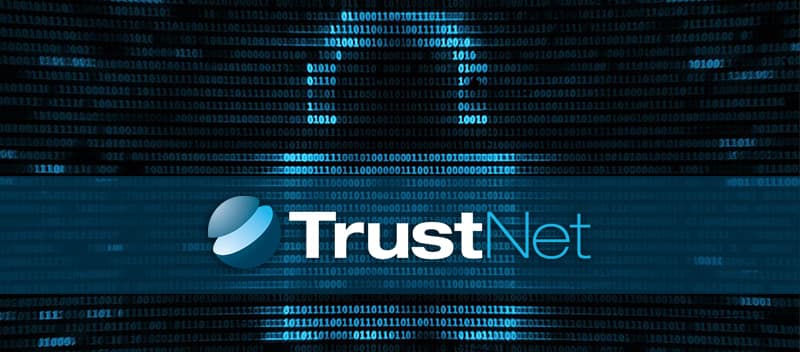
TL;DR TrustNet delivers enterprise-grade cybersecurity through a unified approach that blends managed security, automated compliance, and advanced analytics. Unlike niche providers, TrustNet offers full-spectrum protection, including cloud security, risk rating, and offensive testing, backed by award-winning platforms like GhostWatch and iTrust. With 20+ years of proven success, TrustNet is the trusted partner for CISOs, IT leaders, and compliance teams seeking measurable outcomes. Cyber threats are more complex, persistent, and costly than ever. As digital infrastructure grows, security leaders are under more pressure to choose the right cybersecurity partner. But not all cybersecurity service providers are created equal. With a flood of cybersecurity firms, solution providers, and managed service providers offering overlapping promises, decision-makers need more than marketing—they need clarity. This guide is built for: CISOs securing enterprise environments IT directors seeking dependable protection Procurement leaders evaluating value and risk Business executives aligning security with outcomes Use this as a clear, practical resource to navigate your options and select a cybersecurity partner that aligns with your operational goals and risk profile. Overview of the Cybersecurity Provider Landscape As cyber risks evolve, businesses now rely on specialized partners to protect infrastructure, data, and users. But each provider type brings different strengths. Three core categories dominate the landscape: Managed Security Service Providers (MSSPs): Deliver 24/7 monitoring, threat detection, and incident response at scale. Consulting Firms: Focus on audits, compliance, and risk management strategies. Technology Vendors: Offer platforms or tools for firewalls, endpoint protection, cloud security, and more. The demand for enterprise cybersecurity solutions continues to grow as attacks target organizations of every size. Buyers now prioritize end-to-end services, threat intelligence, and measurable outcomes. While TrustNet serves as a full-spectrum partner, many businesses still evaluate multiple cybersecurity providers with niche capabilities. This guide clarifies those differences, so you can select a solution that fits your operational goals, compliance needs, and internal resources. TrustNet’s Accelerator+ approach brings together Advisory, Automation, and Audit/Assessment, so you get expert guidance, scalable technology, and measurable results in one unified solution. Talk to an Expert TrustNet: Capabilities, Recognition, and Unique Value TrustNet stands out among top cybersecurity service providers by delivering integrated, enterprise-ready solutions built for measurable impact. Since 2003, TrustNet has partnered with mid-size and large enterprises to defend against threats, ensure compliance, and drive better security outcomes across industries. What We Deliver: Managed Security Services: Our GhostWatch platform delivers real-time monitoring, incident response, and threat intelligence tailored to your environment. Automated Compliance Assessments: Full-scope audits for PCI DSS, HIPAA, SOX, SOC, and other regulatory frameworks via our GhostWatch Managed Compliance solutions. Cloud Security: Protection across hybrid and multi-cloud environments with automated controls and continuous monitoring. Advanced Monitoring & Analytics: Early threat detection using behavioral analysis, anomaly detection, and machine learning. Recognized Expertise and Credentials TrustNet is backed by some of the highest credentials in the industry: PCI QSA, CISSP, CISA, HITRUST CCSFP, ISO 27001 Lead Auditor, and more 20+ years of experience supporting complex enterprise ecosystems Recognized in Forrester reports, SC Magazine, and Vendor Risk Management awards for leadership in risk management and compliance Built on Innovation: iTrust Platform TrustNet’s proprietary iTrust platform delivers: Automated cyber risk ratings Deep vulnerability discovery Machine learning-driven prioritization Real-time insights for proactive decision-making Global clients choose TrustNet for a reason: We don’t just offer cybersecurity solutions, we combine technology, compliance, and operational strategy to protect what matters most. Competitor Features and Focus Areas Feature / Provider Competitor A Competitor B TrustNet Managed Security ✖ ✔ ✔ Compliance Services Limited (SOC only) ✔ (HIPAA, PCI) ✔ (PCI, HIPAA, SOC) Cloud Security ✖ Limited ✔ Proprietary Risk Rating ✖ ✖ ✔ (iTrust) Offensive Security ✖ ✔ ✔ Awards / Recognition ✖ Some industry mentions ✔ (Forrester, SC Magazine, VRM) Industry Focus SMB only Mixed focus Mid / Large Enterprise Key Differentiators: Why Choose TrustNet? TrustNet delivers what today’s enterprises demand: complete protection, clear insights, and a proven partner. Here’s what sets us apart from other cybersecurity firms: iTrust and GhostWatch Platforms: Gain automated managed security and compliance, intelligent risk ratings and deep analytics powered by machine learning. End-to-End Compliance: Access full-spectrum regulatory expertise, including PCI, HIPAA, SOX, ISO, and SOC assessments. Proven Risk Reduction: TrustNet’s award-winning vendor risk management platform helps reduce breaches and compliance failures at scale. Enterprise-Ready Solutions: We tailor cybersecurity solutions for businesses of all sizes, scalable, flexible, and aligned to your growth. Dual-Defense Strategy: We lead in both proactive defense and offensive security testing, giving your organization a full-circle security posture. Two Decades of Impact: Since 2003, TrustNet has protected enterprise assets with unmatched reliability and results. Make the Right Choice in Cybersecurity Choosing the right cybersecurity provider directly impacts your ability to stay secure, compliant, and resilient. You need more than a vendor, you need a partner with proven expertise, advanced technology, and a track record of real results. TrustNet’s Accelerator+ approach provides a unified strategy that combines Advisory, Automation, and Audit/Assessment, ensuring your security and compliance programs remain effective, efficient, and audit-ready. Take the next step: Request a consultation Schedule a personalized demo Get an expert-led audit of your current security posture
Cyber Hygiene: Best Practices for Employees
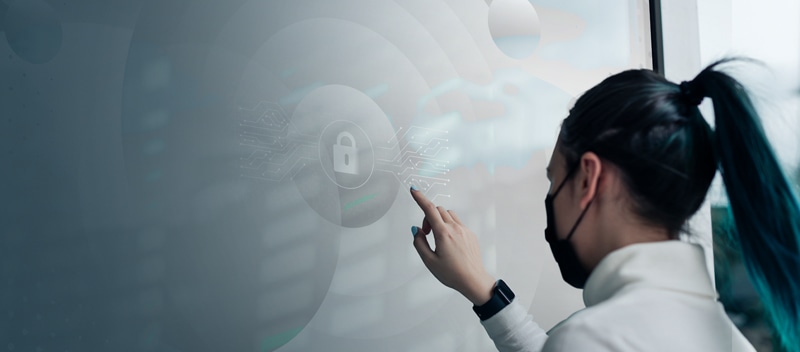
TL;DR Cyber hygiene refers to everyday practices that ensure the security and safety of digital systems, networks, and data. Adopting strong cyber hygiene reduces the risk of cyberattacks, including phishing, malware, and data breaches. Regular password updates, device security, and awareness of phishing attempts are key. Employees at every level play a vital role in protecting company data and creating a security-conscious culture. Cyber hygiene refers to the routine practices and steps individuals and organizations take to maintain the health and security of their devices, networks, and data. Much like personal hygiene, these practices are essential for preventing infections, in this case, cyber threats like malware, phishing, and ransomware. For instance, in 2024, over 20 school districts on Long Island experienced cybersecurity breaches, compromising the personal information of more than 10,000 students. Experts highlighted the challenge of maintaining robust cybersecurity due to limited resources and a significant role of human error, such as phishing and fake login pages, which accounted for nearly 45% of the breaches. (Source: nypost.com) This guide is built for employees at all levels, from new hires to IT managers. You’ll learn: What cyber hygiene is and why it matters Real-world risks of neglecting cybersecurity hygiene A practical checklist of habits to keep company data secure Use this article to take control of your digital safety, reduce risk, and help build a culture of cybersecurity awareness across your organization. What is Cyber Hygiene and Why is it Important? Cyber hygiene refers to the routine practices and steps individuals and organizations take to maintain the health and security of their devices, networks, and data. Much like personal hygiene, these practices are essential for preventing infections, in this case, cyber threats like malware, phishing, and ransomware. When teams neglect cybersecurity hygiene, they create vulnerabilities that attackers can exploit. These breaches can lead to: Data loss or theft Financial damage Legal consequences Reputational harm Even one careless click can open the door to ransomware or credential theft. Employees play a crucial role in protecting their organization’s digital assets. Every team member, from interns to executives, acts as a frontline defender against cyber threats. By adopting strong cyber hygiene practices, employees help reduce risk and build a culture of cybersecurity awareness across the company. Effective cybersecurity starts with daily habits. When everyone follows them, the organization stays safer, stronger, and more resilient. Need Help Embedding Cyber Hygiene in Your Workplace? TrustNet helps organizations build a strong security culture from the inside out. Talk to an Expert Essential Cyber Hygiene Best Practices for Employees Developing strong cyber hygiene practices helps employees protect their accounts, devices, and the organization’s overall security posture. Below is a practical cyber hygiene checklist every employee should follow: Use Strong, Unique Passwords Create complex passwords for each account using a mix of letters, numbers, and special characters. Avoid password reuse. Enable multi-factor authentication (MFA) to add an extra layer of protection. Keep Software Updated Install updates for your operating system, browsers, applications, and antivirus software as soon as they become available. Cybercriminals often exploit known vulnerabilities in outdated systems. Stay Alert for Phishing Avoid clicking on suspicious links or downloading unexpected attachments. Always verify questionable emails with your IT team. Secure Your Devices Lock your screen when you leave your desk. Use company-approved VPNs when working remotely. Avoid using public Wi-Fi to access sensitive data or work systems. Handle Data Responsibly Lock your screen when you leave your desk. Use company-approved VPNs when working remotely. Back Up Critical Data Regularly back up essential files using secure, IT-approved solutions. This minimizes downtime and data loss in the event of ransomware, hardware failure, or accidental deletion. These practices form the foundation of daily cybersecurity hygiene and help build a security-aware workplace. Building a Culture of Cybersecurity Awareness Cyber threats are constantly evolving, making ongoing education and training crucial for employees at all levels. Here’s how to foster a culture of awareness: 1. Ongoing Cybersecurity Awareness Training Cybersecurity awareness training should be continuous, not a one-time event. Regular sessions ensure employees remain informed about current threats, security practices, and potential risks. It also encourages vigilance in recognizing suspicious activities and adhering to company policies. 2. Benefits of a Cybersecurity Awareness Program Participating in a cybersecurity awareness program offers several advantages: Simulated Phishing Tests: These mock scenarios help employees recognize phishing attempts and learn how to respond. Workshops and Seminars: In-person or virtual workshops provide employees with a deeper understanding of best practices, ensuring they stay proactive. 3. Encourage Reporting Suspicious Activity Employees should feel empowered to report unusual activity without hesitation. By reporting potential threats, individuals contribute to the organization’s overall security posture. Employees should also be encouraged to ask questions if they are unsure about security procedures. 4. Reinforcing Cyber Hygiene through Leadership Managers play a crucial role in reinforcing cyber hygiene. Regular reminders, such as short security briefings or weekly tips, help maintain focus on best practices. Recognizing employees who follow proper security procedures can also motivate others to do the same. By committing to cybersecurity awareness, both employees and managers create a proactive environment where everyone contributes to maintaining a secure workplace. FAQs and Common Misconceptions Which of the following are good cyber hygiene practices? A: Good cyber hygiene practices include using strong, unique passwords, enabling multi-factor authentication, keeping software updated, and being cautious with suspicious emails or links. How often should I update my passwords? A: It’s recommended to update passwords every 60–90 days. However, if you suspect a breach or if a service has been compromised, update them immediately. What should I do if I suspect a phishing attempt? A: If you suspect a phishing attempt, do not click any links or open attachments. Report it to your IT team immediately and delete the suspicious message. Common Misconceptions “Antivirus alone is enough.” Antivirus is just one layer of defense. Effective cybersecurity requires multiple measures, including strong passwords, encryption, and user awareness. “Cybersecurity is only IT’s responsibility.” Cybersecurity is everyone’s responsibility. Employees play a vital role in maintaining safe digital practices, reporting suspicious activities, and following security
Cybersecurity Trends to Watch: Insights from RSAC 2025
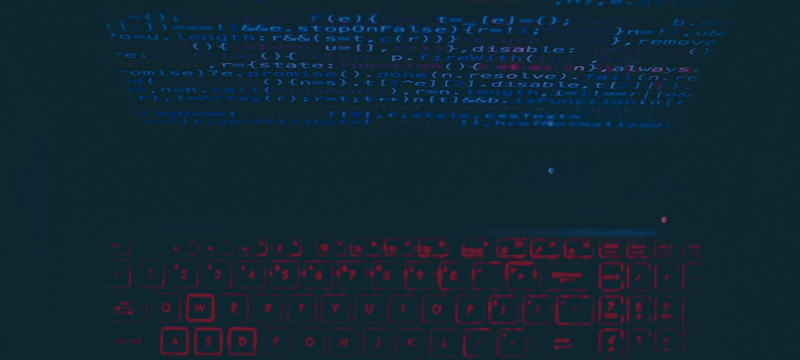
RSAC 2025 highlighted the key cybersecurity trends for 2025: AI’s critical role in both defense and attack, the rise of identity management and Zero Trust, integrated security solutions, regulatory shifts, and ongoing product innovation. Organizations must adapt by investing in AI-driven tools, enhancing identity security, and proactively aligning with evolving regulations. The future of cybersecurity is all about resilience, collaboration, and continuous learning. RSAC 2025, the world’s leading cybersecurity event, gathered nearly 44,000 cybersecurity professionals, vendors, and thought leaders. The event spotlighted urgent challenges and emerging innovations that will redefine cybersecurity. This article outlines the most critical cybersecurity trends from RSAC 2025. It covers real-world advances in AI, identity, and integration, along with the latest shifts in regulation and workforce strategy. Each section includes clear takeaways to help your team adapt and lead. Tracking these cybersecurity trends for 2025 is essential to build resilience and drive smarter security strategies. Here’s what you need to know. 1. AI Takes Center Stage: From Agentic AI to Adversarial Threats AI is the future of cybersecurity, and RSAC 2025 proved it. According to RSAC 2025 session data, more than 40% of sessions focused on AI, a sharp rise from just 5% in 2023. Leaders across the industry emphasized its growing role in both defense and attack. — Agentic AI is reshaping security operations Agentic AI refers to autonomous systems capable of performing tasks and making decisions with minimal human input. In security operations, these AI agents now automate key workflows, from triage to incident response. At RSAC 2025, security teams saw real-world demos where Agentic AI cut response and dwell times by over 40%. Most tools included “human-in-the-loop” controls to ensure accountability and responsible deployment. — Adversarial AI introduces new attack surfaces Threat actors are exploiting AI models with techniques such as: Prompt injection to manipulate LLM outputs Jailbreaking to bypass built-in restrictions Model poisoning to compromise training data This threat category is expanding rapidly. Practical takeaways: Build AI literacy across security teams Deploy vetted AI-powered tools with oversight Conduct red teaming against AI systems Monitor and adapt to new adversarial techniques AI is not optional. It is central to defending against the top cybersecurity trends of 2025. Understanding where the industry is headed is the first step. TrustNet delivers insights, solutions, and guidance to help security leaders stay informed and prepared for what’s next. Talk to an Expert 2. Identity Management and Zero Trust: The New Front Lines Identity took center stage at RSAC 2025. Over 330 sessions focused on identity management, confirming it as one of the most urgent cybersecurity industry trends of 2025. Several key challenges and priorities stood out: Identity-based attacks continue to escalate. Threat actors increasingly target users, credentials, and misconfigured access. Zero Trust adoption is accelerating. Organizations are implementing least-privilege access and micro segmentation to limit lateral movement. Hybrid environments complicate IAM. As companies adopt more cloud services and AI systems, securing identity across environments grows more complex. The RSAC conference 2025 spotlighted modern identity strategies with strong support for: Federated identity frameworks Decentralized identity systems Continuous authentication models Security leaders must shift from perimeter-based defenses to identity-first architectures. Practical takeaways: Modernize your IAM systems and embed Zero Trust into your core architecture. Prioritize visibility, automation, and continuous validation to stay ahead of identity-driven threats. 3. Integration, Collaboration, and the Rise of Platform Security At RSAC 2025, cybersecurity experts emphasized the importance of integrated security solutions. As security stacks become more complex, silos between tools and technologies hinder effective protection. The industry is now moving towards platform-based approaches that streamline security operations. Key points discussed: Collaboration across vendors: Cisco AI Defense integrates with ServiceNow SecOps, demonstrating how cross-vendor collaboration improves incident response. Holistic visibility: Unified platforms reduce silos and provide comprehensive oversight across networks, endpoints, APIs, and cloud environments. Cloud security: As organizations adopt cloud infrastructure more widely, they must ensure seamless integration of security tools across on-premises and cloud environments. Practical takeaways: Evaluate and adopt integrated security platforms that can streamline management, improve visibility, and provide a unified defense against evolving threats. Collaboration between your existing tools and new technologies is key for maintaining strong security at scale. 4. Regulatory Shifts and Policy Futures Also, at RSAC 2025, experts discussed the future of cybersecurity regulation and policy. Key takeaways include: Government’s Growing Role: Governments are increasing their involvement in cybersecurity defense, emphasizing the need for stronger public-private collaboration. Stricter Regulations on AI, Identity, and Supply Chains: Regulators are set to impose stricter rules on AI deployment, identity management, and supply chain security as these areas continue to evolve. Security leaders must actively monitor regulatory changes and ensure their cybersecurity programs align with new requirements. By staying proactive, they can mitigate risks and avoid compliance gaps. Practical takeaways: Continuously monitor regulatory shifts and update your compliance strategies to stay ahead. 5. The Cutting Edge: Product Innovation and Skills Development RSAC 2025 further showcased groundbreaking product innovations that leverage AI, large language models (LLMs), and automation to enhance detection, response, and network defense. Key advancements focused on: AI model and pipeline protection: Securing AI systems from adversarial attacks and ensuring data integrity. API security: Strengthening defenses against API-based vulnerabilities, which are increasingly targeted by attackers. Endpoint and cloud security: Advancing solutions to safeguard critical assets across diverse environments. Additionally, RSAC featured interactive experiences, such as capture-the-flag and AI Cyber City competitions, highlighting the need for continuous skills development. These events stressed that security teams must stay agile and equipped with the latest knowledge and techniques to tackle emerging threats. Practical takeaways: Organizations must invest in next-gen security solutions while prioritizing ongoing workforce development and upskilling to ensure their teams’ resilience. Continuously monitor regulatory shifts and update your compliance strategies to stay ahead. Conclusion & Recommendations RSAC 2025 highlighted key trends shaping the future of cybersecurity: AI’s central role in enhancing security. The rise of identity management and Zero Trust models. Increasing importance of integrated and platform-based security solutions. Regulatory shifts require proactive compliance. Ongoing innovation is driving security products and workforce skills. To stay ahead of evolving threats, organizations
Types of Threats and Vulnerabilities in Cyber Security

As the recent epidemic of data breaches illustrates, no system is immune to attacks. Any company that manages, transmits, stores, or handles data must institute and enforce mechanisms to monitor its cyber environment, identify vulnerabilities, and close security holes as quickly as possible. It’s essential to distinguish between cyber threats and vulnerabilities before identifying specific risks to modern data systems. Cyber threats are security incidents or circumstances that can negatively affect your network or other data management systems. Examples of common security threats include phishing attacks leading to malware infection, a staff member’s failure to follow data protection protocols causing a data breach, or even natural disasters that disrupt your company’s data headquarters. Examples of common security threats include phishing attacks that result in installing malware that infects your data, a staff member’s failure to follow data protection protocols that causes a data breach, or even nature’s forces that take down your company’s data headquarters, disrupting access. Vulnerabilities are the gaps or weaknesses in a system that make threats possible and tempt threat actors to exploit them. Types of vulnerabilities in network security include, but aren’t limited to, SQL injections, server misconfigurations, cross-site scripting, and transmitting sensitive data in a non-encrypted plain text format. When threat probability is multiplied by the potential loss that may result, cybersecurity experts refer to this as a risk. Types of Security Threats In the same way that bacteria and illnesses can invade one’s body, various threats can harm hardware and software systems. Some of the major ones include the following: Viruses are designed to be easily transmitted from one computer or system to another. Often sent as email attachments, viruses corrupt and co-opt data, interfere with your security settings, generate spam, and may even delete content. Computer worms are similar; they spread from one computer to the next by sending themselves to all of the user’s contacts and subsequently to all contacts’ contacts. Trojans are malicious pieces of software that insert themselves into a legitimate program. Often, people voluntarily let trojans into their systems in email messages from a person or an advertiser they trust. Your system becomes vulnerable to malware when the accompanying attachment is open. Bogus security software that tricks users into believing that their system has been infected with a virus. The accompanying security software the threat actor provides to fix the problem causes it. Adware tracks your browsing habits and causes particular advertisements to pop up. Although this is common and often something you may even agree to, adware is sometimes imposed upon you without your consent. Spyware is an intrusion that may steal sensitive data such as passwords and credit card numbers from your internal systems. A Denial of Service (DOS) attack occurs when hackers deluge a website with traffic, making it impossible to access its content. A distributed denial of service (DDOS) attack is more forceful and aggressive since it is initiated from several servers simultaneously. As a result, it is harder to mount defenses against it. Phishing attacks are social engineering infiltrations whose goal is to obtain sensitive data, such as passwords and credit card numbers, incorrectly. The hacker downloads and installs malware via emails or links from trusted companies and financial institutions. SQL injections are network threats that involve using malicious code to infiltrate cyber vulnerabilities in data systems. As a result, data can be stolen, changed, or destroyed. Man-in-the-middle attacks entail a scenario where the communication of two private entities is intercepted and manipulated by a third party. While it is limited to listening, the attacker can also manipulate or alter the information, creating false information and even security risks. Rootkits are tools that allow remote and illegitimate access to computer systems. They can also abuse system resources by introducing malicious software and compromising passwords or other data. For more on our Penetration Testing services Click Here Understanding Network Vulnerabilities Protecting your network systems has become essential in today’s modern business landscape. A simple mistake can cause the most severe disruptions. Key Vulnerabilities to Watch Out For: Outdated Applications: Failing to update, test, and patch applications can expose your network to risks like code injection and cross-site scripting. Security Gaps: Insecure direct object references and similar vulnerabilities open your systems to potential breaches. Why It Matters If these vulnerabilities are not addressed quickly enough, you compromise not only your data but also the integrity of your entire business. Customer trust and business operations will also be at risk without appropriate security precautions. Make these steps a top priority to protect your network from possible attacks and guarantee a safe online environment.
How TrustNet Automates Compliance & Security for Enterprises: Reduce Risk & Cost
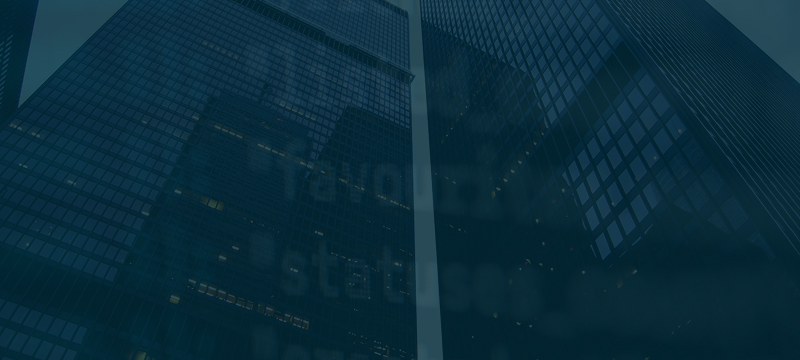
TrustNet helps enterprises reduce risks and costs with automated compliance and security solutions. Our GhostWatch platform streamlines compliance tasks, enhances security monitoring, and provides real-time threat detection, ensuring your business stays audit-ready and secure without the manual hassle. Say goodbye to costly inefficiencies and hello to smarter, scalable security. Most businesses face significant challenges managing risk effectively. Key issues include: Lack of centralized, automated risk dashboards. Teams remain blind to security gaps and slow to respond. Vulnerabilities exist across multiple departments. Increasingly sophisticated threats outpace manual defenses. Manual compliance processes increase risk and delay response. Inefficient workflows drive up costs and operational strain. Modern enterprises need more than checklists. They need scalable, automated compliance and enterprise network security solutions that respond in real-time. TrustNet delivers exactly that. TrustNet’s compliance automation solutions simplify complex frameworks, eliminate human error, and provide real-time visibility into risk posture. We transform compliance from a burden into a strategic advantage, supporting security, agility, and cost control at scale. In this article, you’ll learn how automation helps: Streamline compliance and audits Minimize compliance risk and breach exposure Reduce security overhead across global networks The future of enterprise security is automated. TrustNet helps you lead it. The Real Cost of Manual Compliance and Security Manual compliance and security processes impose both direct and hidden costs on enterprises. Beyond the obvious expenses of labor and resources, organizations face significant risks that can lead to financial and reputational damage. Direct Costs Time Intensive: Manual audits, data entry, evidence collection, and audit preparation strain business resources. Redundancy & Delays: Manual processes often lead to miscommunication, duplicate efforts, and compliance fatigue. Human Errors: Manual processes are prone to mistakes, which can result in compliance violations and security vulnerabilities. Regulatory Blind Spots: Without automated tracking, organizations may miss updates to regulations, leading to non-compliance. Delayed Threat Detection: Manual monitoring slows response times, increasing breach impact. Real-World Example In 2024, Providence Medical Institute faced a $240,000 fine from the U.S. Department of Health and Human Services (HHS) after a ransomware breach exposed significant compliance gaps under HIPAA. Automated compliance tools could have prevented these violations by enforcing access controls and managing business associate agreements (BAAs). The Need for Automation To mitigate these risks and costs, enterprises must adopt automated compliance and security solutions. Automation streamlines processes, reduces human error, and enhances the organization’s ability to respond to regulatory changes and security threats. Schedule your free consultation today and see how TrustNet can help you build a resilient, future-proof compliance framework. Talk to an Expert TrustNet’s Approach to Automated Compliance & Enterprise Security At TrustNet, we understand that enterprises face mounting challenges in staying compliant while safeguarding their networks. GhostWatch is our unified platform for Managed Security and Managed Compliance, built to deliver automated, scalable solutions that reduce risks, improve efficiencies, and ensure regulatory adherence. Key Features of TrustNet’s GhostWatch: — Automated Policy and Evidence Management GhostWatch ensures continuous enforcement and updates of compliance policies for standards like GDPR, PCI DSS, and HIPAA, automatically adapting to changes in regulations. It handles tasks such as automated policy enforcement, evidence collection for audits, and regular compliance checks, ensuring your organization stays aligned with the latest regulatory requirements without manual intervention. — Real-Time Threat Monitoring Powered by AI-driven analytics, GhostWatch continuously scans your network for emerging threats, enabling early detection and reducing response times. Its automated threat detection system prioritizes high-risk alerts and provides real-time response suggestions, reducing human error and speeding up mitigation. — Risk Prioritization & Remediation Using real-time data, GhostWatch automatically assesses and prioritizes risks based on their potential impact. It allocates resources toward the most critical vulnerabilities, triggering automated remediation processes for immediate mitigation. This reduces the risk of security breaches and helps your team focus on what matters most. — Unified Compliance Dashboards GhostWatch’s intuitive dashboards give you one-click access to real-time dashboards and audit dashboards, giving your team a clear view of your organization’s compliance standing across multiple standards. Automated data aggregation pulls real-time metrics and generates compliance evidence automatically, streamlining audits and reporting. — Seamless Integration and Scalability GhostWatch integrates seamlessly with existing systems (SIEM, cloud tools, on-prem infrastructure), scaling your business without manual intervention. TrustNet’s automated solutions, such as GhostWatch, empower your enterprise to stay compliant, secure, and agile, ensuring that compliance becomes an asset, not a burden. Why Enterprises Choose TrustNet — Industry Expertise TrustNet’s solutions address the needs of industries with stringent regulatory requirements, ensuring compliance while maintaining high security. Our deep industry knowledge helps enterprises navigate complex regulations with ease. — Trusted Automation Leverage TrustNet’s AI-powered compliance and risk management tools via GhostWatch for precision and reliability. Our automation reduces manual tasks, minimizes human error, and streamlines compliance workflows, improving speed and scalability. — Integration & Support Integrate TrustNet seamlessly with your existing systems. Our 24/7 enterprise support and dedicated onboarding ensure swift adoption and immediate results. — Real Business Value (Examples) For the healthcare sector: “TrustNet has streamlined the compliance process for my company. With weekly project status updates and reports, I am assured that my staff is up to date on all document submissions.” — Andy Wanicka, President – Certified Medical Consultants For IT consultancy: “TrustNet’s extensive knowledge and experience navigating between various certification frameworks allowed us to fast-track the audit process, leading us to complete the certification with confidence.” — Chris Hagenbuch, Principal – Canda Solutions The Accelerator+ Approach Transform your security and compliance processes with TrustNet’s Accelerator+ approach. This comprehensive strategy includes: Advisory: Work with our experts to identify compliance gaps and tailor solutions to meet your specific needs. Automation: Use GhostWatch to automate complex processes, enhance threat detection, and optimize resource allocation. Audits & Assessments: Stay audit-ready with comprehensive assessments that highlight vulnerabilities and ensure compliance is maintained.
RSA 2025: Industry Trends Business Leaders Are Watching Out For
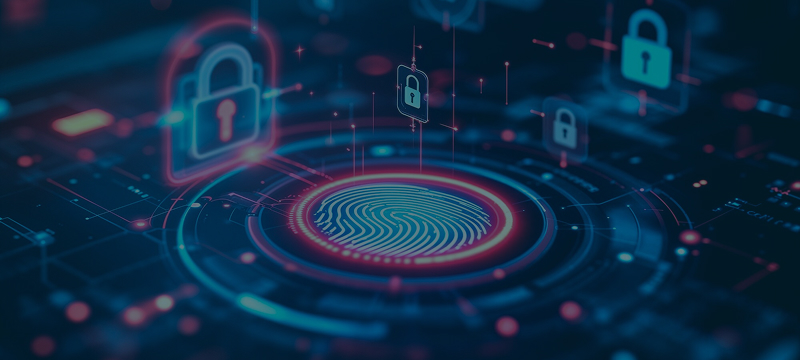
The RSA Conference 2025, set for April 28 to May 1 in San Francisco, is poised to tackle the pressing challenges shaping the future of cybersecurity. This year’s event will focus on pivotal topics, including: Real-world risk, highlighting the complexities of today’s threat landscape. AI-driven threats are redefining security strategies. Compliance limitations demand bold, innovative approaches. We spoke with seven leading voices in cybersecurity and business to better understand these trends. Their insights reveal the strategies businesses must prioritize to adapt and thrive in 2025’s fast-evolving environment. Building on these discussions, TrustNet is proud to return to the RSA stage. Chief Information Security Officer Trevor Horwitz and Chief Technology Officer Mike Kerem will lead the session “The Dark Side of SOC 2: Third-Party Risks Hiding in Plain Sight.” Attendees can expect actionable strategies, cutting-edge analysis, and fresh perspectives on tackling hidden vulnerabilities. Read on to explore these insights and prepare for what lies ahead. Cybersecurity Trends to Watch at This Year’s RSA Conference 1. AI Transforming Security Strategies The RSA Conference 2025 is shaping up to be a fascinating event, with some key trends and sessions worth paying attention to, especially for those of us interested in how cybersecurity is evolving. Artificial intelligence (AI) seems to be taking center stage this year, with over 40% of session proposals focusing on AI-related topics. That alone signals how rapidly AI is transforming both the threats we face and the tools we use to defend against them. Saddat says, “AI is becoming the double-edged sword of cybersecurity–it’s both the attacker’s weapon and the defender’s shield.” “This resonates with what’s being discussed at RSA. For example, sessions like “The Inevitable Collision Between 5G and Zero Trust” and “Expose and Disrupt: Build Your Attack Paths” dive into how AI is reshaping security strategies. These talks focus on using AI to predict and prevent attacks while also addressing vulnerabilities created by emerging technologies like 5G. Another interesting theme this year is identity security. With 80% of cyberattacks involving compromised credentials, it’s clear that securing identities–both human and non-human–is a top priority. Sessions like “2025 and Beyond: The Evolution of Identity-Centric Cybersecurity” highlight how multi-factor authentication and passwordless systems are becoming essential defenses. One session I’d personally keep an eye on is “Turning Breach Fails into Best Practices,” which examines how recent breaches could have been mitigated through better compliance and controls. It’s always insightful to learn from real-world examples, especially when they’re tied to practical solutions. From my perspective, the RSA Conference isn’t just about catching up on trends–it’s about understanding where the industry is headed. For example, the focus on microsegmentation in healthcare security or the rise of AI-driven phishing attacks shows how diverse the challenges are across sectors. These discussions remind us that cybersecurity isn’t just a technical issue; it’s about protecting people, data, and systems in a rapidly changing world.” Saddat Abid, CEO, Property Saviour 2. Zero-Trust Architecture and Internal Traffic Monitoring “Keeping an eye on the latest developments in zero-trust architecture is key this year. While zero-trust isn’t new, many companies still struggle with its implementation. The focus is shifting towards the practical application of zero-trust in hybrid environments, where cloud and on-premises systems intersect. It’s fascinating to see discussions around how to manage micro-segmentation effectively without creating an administrative nightmare. Too often, businesses overlook the importance of monitoring internal traffic. Employing tools to watch what’s already inside your network can catch anomalies early and prevent breaches before they escalate. Another trend catching my attention is autonomous threat detection using AI. The integration of machine learning to predict and respond to threats in real-time is moving from theoretical to practical in many businesses. Not enough organizations prioritize creating comprehensive data lakes for AI analysis, missing out on valuable insights. Building a robust dataset can better support AI models and help you spot threats that would otherwise slip by traditional methods. The takeaway here is to enhance your data collection strategies, ensuring your AI solutions have the rich data they need to be truly effective.” Matthew Franzyshen, Business Development Manager, Ascendant Technologies, Inc. 3. AI and Machine Learning in Cybersecurity “At this year’s RSA Conference, I’m paying close attention to how AI and machine learning are being applied to cybersecurity. These technologies are becoming crucial in detecting threats and automating responses. I’m also focusing on the evolving risks of cloud security. As businesses move more data online, the attack surface grows. Another area I’m watching is zero-trust security models. The shift from perimeter-based defenses to continuous authentication is gaining momentum. Finally, I’ll be looking for sessions on ransomware trends and emerging threat actor tactics. These attacks continue to be a major concern for businesses worldwide. My goal is to stay ahead of new techniques that could help organizations better defend against the increasing sophistication of cyber threats.” Mike Khorev, Managing Director, Nine Peaks Media 4. Intersection of AI and Cybersecurity “This year’s RSA Conference is packed with sessions focused on the intersection of AI and cybersecurity–particularly how generative AI is changing the threat landscape and reshaping defense strategies. Cyber resilience is another major theme, with keynotes diving into supply chain security, post-quantum cryptography, and zero trust evolution. Personally, I’m keeping a close eye on sessions around automated threat detection and AI-driven red teaming. The field is moving fast, and the conversations are finally shifting from hype to implementation–what’s working, what’s not, and where AI might be introducing more risk than it’s solving. Also worth watching: panels on cybersecurity governance for boards and the increasing regulatory pressure around incident disclosure. With SEC and global regulators tightening the rules, the strategy side of security is getting just as much attention as the technical. If you’re attending or tuning in virtually, the insights this year seem especially geared toward practical takeaways, not just high-level thought leadership–which is a good sign for how the industry is maturing.” Patric Edwards, Founder & Principal Software Architect, Cirrus Bridge 5. ERP Security and Blockchain Discussions “ERP security has been giving
Social Engineering Tactics & Prevention
Social engineering is one of the most cunning forms of cybersecurity manipulation. Instead of targeting systems or software vulnerabilities, it focuses on people, exploiting human behavior through psychological manipulation or deception. The end goal? Trick individuals into revealing sensitive information or granting unauthorized access, often without them even realizing the risk involved. Why does social engineering awareness matter? Social engineering attacks are becoming more common, affecting both individuals and organizations alike. These tactics are difficult to spot because they feel personal, relying on human behavior — not technology. Awareness is the first step to protecting yourself and strengthening your defenses. This article explains key terms and concepts, giving you the tools to recognize and prevent these increasingly sophisticated social engineering threats today. How Social Engineering Works Social engineering works when attackers follow a structured plan that includes key steps to manipulate their targets successfully. Reconnaissance: First, they gather information about the target. This could involve researching an organization’s employees or monitoring someone’s online activity. Trust-Building: Next, they create a sense of familiarity or authority. This might look like posing as a trusted colleague or a legitimate customer service representative. Manipulation: The attacker uses psychological tactics to push the target into action. Fear of losing access, urgency to fix a problem, curiosity about a too-good-to-be-true offer, or respect for authority often come into play. Execution: Finally, the attacker gets the target to reveal sensitive information or grant access, concluding the scheme. Understanding how these steps work can help individuals and organizations recognize red flags and secure their systems against such techniques. Learn more about our cybersecurity and compliance services. Contact our experts today. Talk to an Expert Common Types of Social Engineering Attacks Social engineering attacks come in many forms, each designed to exploit human behaviors and vulnerabilities. Here are some of the most common types, along with real-world tactics to watch out for: Phishing: One of the most widespread techniques. Attackers send fake emails or messages that look official, often tricking users into sharing passwords, financial details, or other sensitive information. Phishing examples might include emails claiming unusual login activity or requests from a “manager” for urgent action. Pretexting: This method is all about creating a believable story or scenario to gain trust. Attackers could impersonate a bank representative asking for verification details or an IT staff member requesting account credentials. Vishing/Smishing: These combine the power of voice and text. Vishing uses phone calls, often creating fear or urgency (“Your account has been compromised!”), while smishing relies on text messages to prompt actions like clicking harmful links. Baiting: This approach offers something tempting — like a free USB drive or access to exclusive content — but comes with hidden malware. Just plugging the device into your system or clicking the link starts the attack. You can easily spot red flags early and avoid falling prey to these deceptive techniques by understanding these common tactics. Advanced Tactics in Social Engineering While common social engineering attacks like phishing and baiting exploit general human vulnerabilities, threat actors are increasingly turning to more sophisticated tactics to manipulate individuals and access sensitive systems. Here are some advanced social engineering methods that organizations should be aware of: — Spear Phishing Unlike regular phishing, spear phishing is highly targeted and personalized. Attackers research their victims to craft convincing emails or messages that appear authentic. For example, a fraudster might pose as a trusted colleague or vendor, requesting sensitive information or payment. These targeted attacks often bypass generic security training due to their tailored nature. — Whaling A specialized form of phishing, whaling focuses on high-profile individuals such as executives or senior managers. These attacks exploit their authority or access to critical systems for maximum impact. A whaling attack might involve a forged email ostensibly from the CEO requesting a wire transfer for a “top-secret” deal. Due to the status of the target, these scams often yield substantial financial or informational gains. — Tailgating Also known as “piggybacking,” tailgating involves an attacker gaining physical access to restricted areas by exploiting social norms. For instance, a person might follow an employee into a secure building, pretending they forgot their access card. Once inside, the attacker can steal hardware, access unsecured terminals, or plant malicious devices. Physical security awareness is key to mitigating this threat. Case Study: 2016 DNC Phishing Attack Incident Summary: During the 2016 U.S. presidential election, the Democratic National Committee (DNC) fell victim to a spear phishing attack. Cybercriminals accessed sensitive emails and documents, triggering political fallout and reputational damage. Attack Method: Cybercriminals used highly targeted spear phishing emails. They tricked staff into entering credentials on a fake login page, granting unauthorized access to the DNC’s email systems. Why Social Engineering is Effective Social engineering is highly effective because it takes advantage of natural human tendencies. Attackers rely on psychological manipulation rather than technical exploits, making these tactics harder to detect and defend against. Here’s why this method works so well: Exploitation of Trust: Attackers pose as credible figures, such as a manager or IT staff, to create a sense of authority and reliability. Leverage of Emotional Responses: Fear and urgency are often used to pressure quick decisions, while curiosity or helpfulness might lure individuals into unintended actions. Human Error in Cybersecurity: Even well-trained individuals can make mistakes when under pressure or when emotions are triggered. This human element creates openings for trust exploitation. Because these psychological cyber attacks bypass technical systems and go straight for human vulnerabilities, detecting them in real time can be incredibly challenging. How to Prevent Social Engineering Attacks Preventing social engineering attacks starts with building awareness and adopting proactive defenses. Here are key steps to bolster your social engineering defense: Stay Skeptical: Always question unsolicited requests for information, especially if they seem urgent or unusual. Verify the requestor’s identity through official channels before taking action. Cybersecurity Awareness Training: Regularly educate employees about common attack tactics, such as phishing, pretexting, and baiting. Training programs empower teams to recognize warning signs and respond appropriately. Use Multi-Factor Authentication (MFA): Adding an extra layer of security makes it harder


